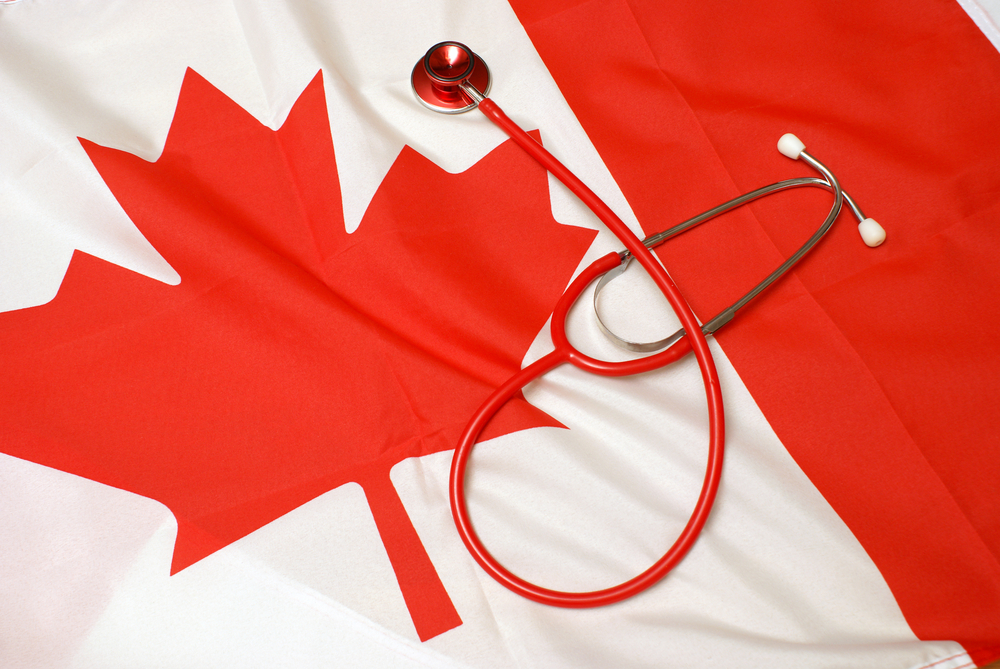Canada News
More doctors won’t fix Canada’s health care woes

Canada now has more doctors per capita than ever and, despite this greater supply, we continue to face issues in access and quality of care. Recent data from the Canadian Institute for Health Information shows, for instance, that the number of physicians grew by 12.5 per cent from 2014 to 2018, while Canada’s population increased by only 4.6 per cent. (Shutterstock photo)
The current proposal by the Liberal Party in this federal election campaign to increase access to family doctors is well-intended but is the wrong solution to Canadians’ health-care needs.
Simply providing more funding for more doctors will not address all of the challenges underlying our health-care system.
Canada now has more doctors per capita than ever and, despite this greater supply, we continue to face issues in access and quality of care. Recent data from the Canadian Institute for Health Information shows, for instance, that the number of physicians grew by 12.5 per cent from 2014 to 2018, while Canada’s population increased by only 4.6 per cent.
As we have one of the most expensive health-care systems in the world, the problem in Canada is not shortage of dollars but, instead, mismatches in how we allocate resources.
There are three mismatches creating real barriers to achieving a strong mix of access, quality and cost effectiveness in Canadian health care.
Location, capabilities, co-ordination
First, we face mismatches in both locations and skills. Many problems of physician supply result from unbalanced locations and relevant skills, with more doctors per capita in some locations, and far fewer in other areas of the country, particularly in rural areas.
As well, we see substantial mismatches between the supply of health-care professionals — including, but not limited to doctors — and the health needs in a community. In turn, we have a relative under-supply of primary care physicians, a key driver in keeping communities healthy, compared to some specialties.
Second, we face mismatches in how we use doctors’ skills. Our system over-relies on doctors and other highly trained health-care professionals to provide services that could be supplied at least as effectively by appropriately trained physician assistants, nurse practitioners, pharmacists and other health-care professionals.
The majority of doctors we have worked with say that a good portion of their day, often up to 40 per cent, is spent doing work that could be done well by less expensive health professionals. This mismatch of capabilities and work is a recognized contributor to physician burnout.
Third, even more fundamentally, we face mismatches in service co-ordination. Greater access to a traditional family doctor will not solve the major problem of fragmentation in care and services even in seemingly well-served locations.
For instance, a physician in a stand-alone medical practice may diagnose a patient with diabetes-related problems but then face barriers in helping the patient navigate among the dozen or more more specialities and subspecialties — from endocrinology to nutrition, nephrology and social work — needed to provide appropriate care.
New payment models needed
To remedy these mismatches we must fundamentally rethink how we organize and pay for health-care services in Canada.
First, we are only beginning to implement the potential of telemedicine. The technical solutions are largely available and have been in place in other countries for years. What we need now are payment and organizational models that support existing technology.
Second, we need to address scope mismatches: We need models in which lower-skilled work carried out by doctors is led by appropriate complementary staff. This would allow doctors to focus on the medical needs that require their skills.
This change requires different payment models. Specifically, we need to move away from fee-for-service models in which physicians get paid only when they directly touch a patient. This has been achieved elsewhere.
Third, fragmentation among multiple uncoordinated primary, secondary and tertiary providers both increases the cost of services and reduces effectiveness. We need to develop models in which community-based facilities offer a suite of primary services offered by family physicians and relevant professional staff, together with effective links to secondary and tertiary facilities.
Again, these skills and systems largely exist. What we need now are financial models such as “bundled payments” that incentivize organizations to co-ordinate care around the patient. Rather than paying individual doctors for providing individual services, we need to pay teams of health-care professionals for achieving healthy outcomes.
Europe and Asia Pacific lead the way
While all solutions need to make sense in Canadian contexts, we have many models to learn from, in Canada and globally.
First, within Canada, there are many useful experiments that we can build on. For instance, we are optimistic that Ontario’s new initiatives around Ontario Health Teams (OHTs) will bring primary, secondary, tertiary and home care together, though this will only happen if funding models are adapted to support co-ordination.
Second, globally, we need to stop focusing our comparisons on the United States, which faces major issues of inefficiency and high variance in health outcomes, and instead gather relevant insights from countries in Europe and the Asia-Pacific. Data from the Commonwealth Fund and other sources show that these countries regularly lead Canada on ratings of access, efficiency and quality of health-care services and outcomes.
Third, we have opportunities to learn from industry, including firms in medical technology and pharmaceuticals and clinical laboratories. Commercial firms have a broad scope of relationships within Canada and globally that provide highly relevant knowledge of effective health practices.
Rather than treating industry as antagonists, we need to build partnership relationships that draw on their knowledge.
Canadians are justifiably proud of our health systems, but most of our challenges and the solutions to them are not unique to Canada and it is time we stop throwing money at them. Instead, we need new solutions that address the underlying problems damaging Canadians’ health.
——
This article is republished from The Conversation under a Creative Commons license. Disclosure information is available on the original site. Read the original article:
https://theconversation.com/more-doctors-wont-fix-canadas-health-car





















